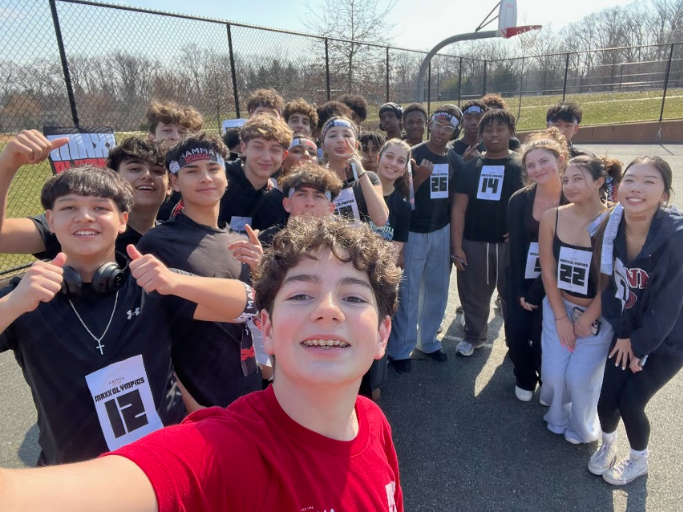A massive unpeeled boiled squash, raw vegetables on a platter and a piece of cheese between two slices of bread: this was the entrée offered to vegetarians at Outdoor Ed, the vegetarian dish served at the Melting Pot and the sad excuse for a veggie burger from McDonald’s. A vegetarian diet can be tasty and exciting, but many eateries make it a hassle to get something both vegetarian and appealing. Luckily, America is a blend of multiple cultures, creating numerous options from which to choose.
A vegetarian is someone who does not consume meat (and, despite common misconceptions, seafood is considered to be meat). To become a vegetarian means making a strong commitment to oneself and to nature. It is not only a diet, but also a lifestyle. Despite the obvious dietary restraints, there are some great meat alternatives.
Vegetarianism has always brought skepticism about its nutritional value: many have doubts as to whether a vegetarian diet can effectively provide all the nutrients a non-vegetarian diet does. Despite this, many nutritionists believe that a diet without meat is perfectly healthy.
“I absolutely believe that [vegetarianism] can be a healthy diet, but it has to be done right,” local nutritionist Christine Williams said. “It’s not just a matter of eliminating animal meat and eating anything else that’s edible. One must be mindful, research and plan. You have to be eating more than a couple vegetables.”
According to Williams, vegans are more susceptible to nutrient deficiency than are vegetarians.
“Vitamin B12 is known to come from animal food and can also be found in certain kinds of yeasts. A lack of it can cause a form of anemia,” Williams said. “So people who eat eggs, milk and cheese get enough B12. We only need a very small amount, and it takes time to settle into the system.”
There are many vegetarians at CHS who find their diets satisfying in terms of both taste and nutrition.
“A cup of Greek yogurt drizzled with honey not only tastes amazing, but has about 15 grams of protein,” junior Emma Benjamin said. “My diet is not that radically different than anyone else’s. I don’t need to take vitamin supplements, and I get all the protein I need.”
For some vegetarians who have tasted meat before, such as sophomore Haley Gross-Holmes, the temptation to eat meat can arise when watching others consume it.
“Cutting chicken out of my diet took about six months. After that, my family had to get used to me not eating meat even though they really liked to taunt me,” Gross-Holmes said. “My family got used to the idea; we’ve all gone pretty much vegetarian. My mom barely makes meat anymore, and if she does, I just microwave a veggie burger.”
Vegetarianism is a healthy diet and is really easy to follow if carefully planned out.
“Vegetarianism is not a bleak existence filled with hockey-puck veggie burgers and tasteless tofu,” Benjamin added. “It actually widens one’s perspective on food.”
Indian food is spicy, flavorful and nutritious. Hinduism, the most prevalent religion of India, prohibits the consumption of meat; therefore, India has numerous varieties and choices of vegetarian food. In everyday cooking, the main source of protein comes from lentils and tamarind, which has been proven to help prevent cancer.
“I wasn’t always a vegetarian, my family literally called me the hamburger king,” English teacher Matthew Reilly said. “My diet [now] consists of amazing food; my favorite type is Indian for the volume of options and Burmese for its fusion of South and Southeast Asian cuisines.”
Easy dishes to make at home include vegetable biryani (vegetables, masalas, spices and rice), lemon rice, tamarind rice, roti (bread), palak paneer (spinach and cheese), rajma (kidney beans and masala), and chole (chickpeas and masala).
Best places to go out: Woodlands (College Park), and Bombay Bistro (Rockville).
Indian food is spicy, flavorful and nutritious. Hinduism, the most prevalent religion of India, prohibits the consumption of meat; therefore, India has numerous varieties and choices of vegetarian food. In everyday cooking, the main source of protein comes from lentils and tamarind, which has been proven to help prevent cancer.
“I wasn’t always a vegetarian, my family literally called me the hamburger king,” English teacher Matthew Reilly said. “My diet [now] consists of amazing food; my favorite type is Indian for the volume of options and Burmese for its fusion of South and Southeast Asian cuisines.”
Easy dishes to make at home include vegetable biryani (vegetables, masalas, spices and rice), lemon rice, tamarind rice, roti (bread), palak paneer (spinach and cheese), rajma (kidney beans and masala), and chole (chickpeas and masala).
Best places to go out: Woodlands (College Park), and Bombay Bistro (Rockville).
Italian vegetarian alternatives consist of breads, pasta, sauces, herbs and cheese. Pasta satisfies hunger similarly to meat, and cheese brings protein to the table in a tasty, refined way. Italian food is also one of the more easy to make vegetarian, as within 15 minutes, a steaming pot of pasta can be placed on the family table as the centerpiece of a delectable meal.
“My favorite type of vegetarian food is Italian because it’s mostly the same as anyone else would eat,” sophomore Jane Drumheller said. “I also loved all of that food even before I had become a vegetarian.”
Easy dishes to make at home include pizza, pesto penne pasta, spaghetti, spinach and cheese ravioli, vegetable lasagna and fettuccine alfredo.
Best places to go out: Mama Lucia’s and Ambrosia Grille.
Categories:
Food for Thought: Vegetarianism offers delectable, healthful options
By By Meghna Balakumar
Staff Writer
October 4, 2010
Story continues below advertisement
0







